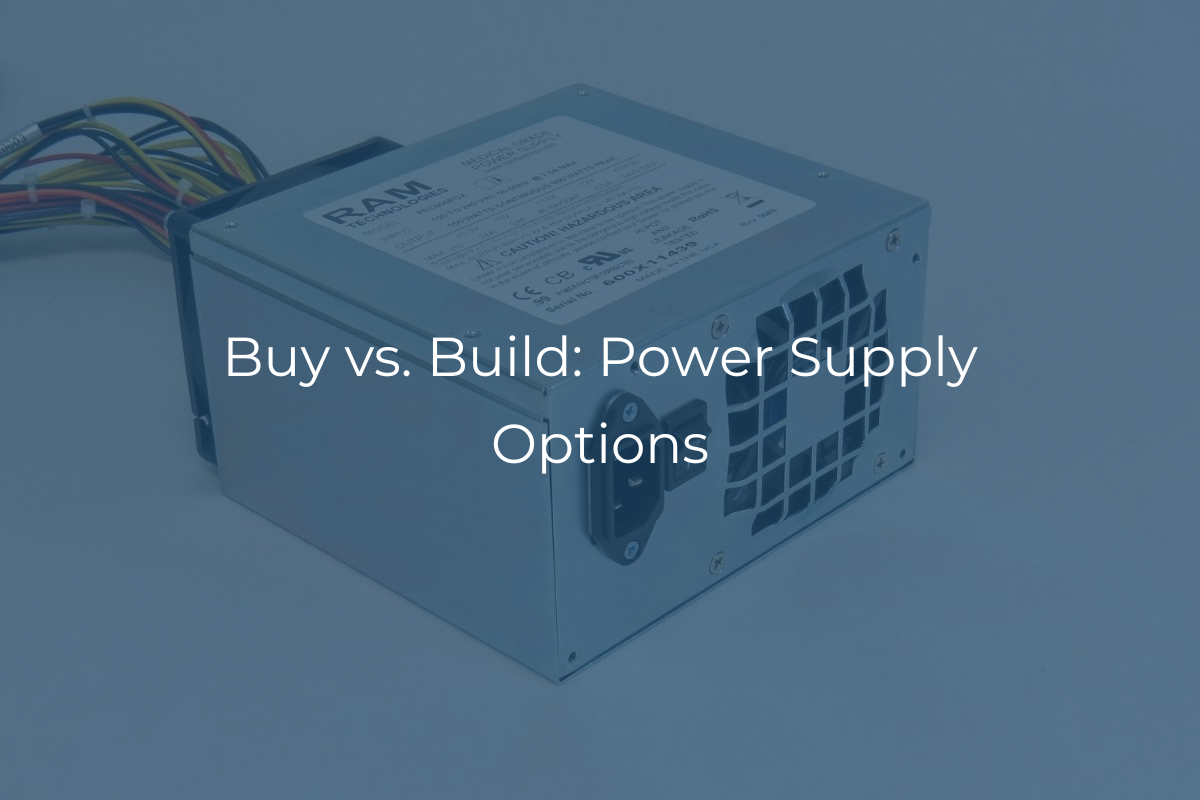When medical device manufacturers are in the design stage, they may wonder whether it makes sense to build a power supply instead of buying one. While building a power supply can offer options for customization and flexibility, many items go into designing a power supply and getting it approved. We’ll discuss the ins and outs of making versus buying a power supply so you can decide which path is right for you.
The Power Supply Market
Power supplies are becoming more important than ever in the medical space and in many other industries. The rise of artificial intelligence and machine learning (AI/ML) places greater demands on power supplies, and in health care, the units that power medical devices need to be reliable, adequately powerful, and compliant with medical-grade regulations.
Buy vs. Build Power Supply: Benefits of Building
Building a power supply gives the manufacturer complete control over the design. There are many different types of power supplies that can power medical devices. Some medical devices may need to remain powered in the case of an outage, making uninterruptable power supplies (UPS) necessary. Some may need to include switching devices that process the voltage that comes out of the power supply. Others may be more linear and put out a continuous voltage.
When manufacturers build a power supply unit (PSU), they can customize its output or the unique footprint required to fit the device. Sometimes, depending on volume and the efficiency involved in the development of the PSU, this can potentially be a more cost-effective alternative. However, that’s assuming that all goes according to plan and the manufacturer has previous experience developing power supplies. Controlling the bill of materials (BOM) cost is a small piece of the overall puzzle.
Challenges to Building
When you build a power supply, you’re not only responsible for the design but also for meeting the regulatory requirements involved in getting a PSU approved on the market alongside approval for the full device. Unless you have the in-house expertise to ensure compliance with standards like IEC 60601-1, this can be a whole new world of approvals.
Depending on where you want to bring your medical device to market, the approval process can be long and complex, and sometimes standards have not yet been harmonized between countries, requiring you to meet slightly or significantly varied standards in different markets.
Designing a power supply also means that you will have to design, prototype, test, and gain safety approvals for your custom PSU at the same time you are working on designing your medical device. This can split focus in smaller organizations and delay time to market.
And, of course, there’s cost. While the BOM may be lower, hidden costs can make designing a power supply more expensive. These include managing additional inventory, fixing design flaws, paying for the approval process in different countries, and purchasing specialized testing equipment.
The Case for Buying a Power Supply
In most cases, buying a power supply for medical devices will be sufficient. While it’s true you won’t be able to control every detail that goes into making a PSU, working with a medical-grade power supply manufacturer can allow you to customize where it matters, like cabling and output harnesses.
By starting the conversation with a PSU manufacturer early, you can plan for the power supply in the design phase, speeding up the time to market without additional design or compliance considerations that would be required if you built your own power supply. Medical device manufacturers may find a wider range of options available than they previously thought at lower overall costs when all expenses are considered.
What to Consider When Buying
If you decide to pursue buying a power supply for your medical device, ensure you are working with a medical-grade provider that can meet all relevant standards, such as IEC 60601-1. A medical PSU manufacturer can help you decide what size you need for what you are powering. For example, graphics-intensive systems will require more power, particularly devices that leverage AI/ML technologies. You may also want to factor in noise level tolerance and a PSU’s ability to withstand outages.
Ultimately, the decision to buy vs. build a power supply will be based on your specific needs and resources. With certain teams that have the right expertise and in-house resources, designing a power supply may be the right way to go. However, for most medical device manufacturers, it’s probable that building a power supply will be too much work for too little payback.
If you are looking for a faster time to market with guaranteed compliance and a range of customization options, talk with RAM Technologies about your power supply options. We can take PSU approval off your list. RAM Technologies offers fast turnaround times, full compliance with EN 60601-1, customized output cables and harnesses, and PSUs available for the length of your design’s time in the market.
RAM Technologies’ power supplies are 60601-1 3.2 certified. When you’re designing your medical device and need help with a PSU, contact us for details.
More Resources:
What the FDA Moving to IEC 60601-1 3.2 Means for Manufacturers
Downloadable Guide to IEC 60601-1
EMC Compliance Testing for Medical Devices
